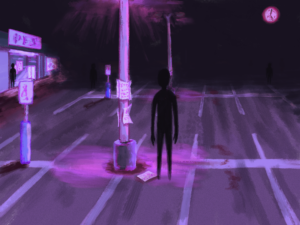
This week was focused on creating and running a second playtest. Unlike our first test, which tested aspects our game mechanics and are art completely separately, this time we wanted to create a single demo that would begin to resemble our complete experience. This took a lot of programming and art work to get ready, but it paid off in a ton of helpful feedback from the playtesters who came through on Friday!
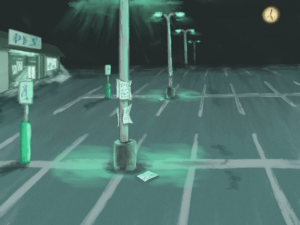
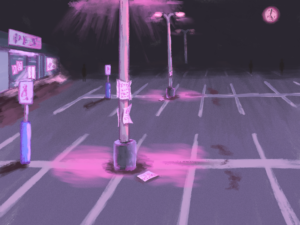
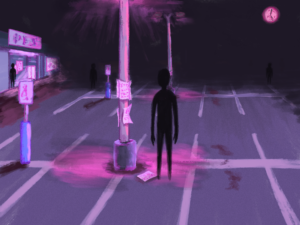
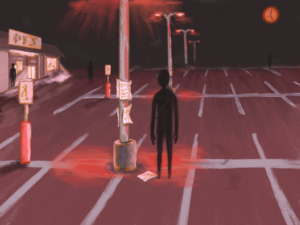
For the test, we decided to focus in on just one of our planned environments, the parking lot, and the ways in which it would change through our planned emotional arc. We finished concept art of this setting in each stage by Tuesday. On Wednesday we received some feedback from Ricardo that the red color chosen for the “fear” stage would likely read as very aggressive rather than scary. So instead of shifting colors to red, we decided to express fear through having the darkness encroach and erase elements of the environment as the figures closed in.
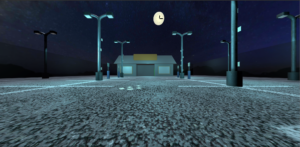
Concepts in hand, we moved on to translating them into 3D. We created and textured models of all the objects from the concept art, and then began assembling the scene in Unity. This was a collaboration between art and programming, especially when it came to the objects used as “reality checks” in this scene of our lucid dream. For these objects (the papers, the windows, and the clock-faced moon), we created shaders to produce warping effects that would intensify as users observed these objects. Look at them long enough, and the objects would produce a shockwave effect and shatter into several pieces. Art and programming also collaborated on placement of lighting in the scene to match the tone and intention of the concept art at each stage.
One of the key pieces of programming work done this week was the creation of scripts controlling how the environment would change over time, including lighting changes as well as objects appearing and disappearing. Finishing these scripts is what allowed us to actually move the scene through the four stages of our planned emotional arc, and so was absolutely crucial to being able to test whether this arc was affecting players or not. We also created scripts to control the movement of the shadow figures, deciding that they should always face the player, and teleport closer to the player about every 15 seconds. Other programming work not directly related to our test this week included creating a whitebox of our entire planned game.
We ran our playtest from 1:30-3:30 on Friday afternoon, and had 10 people came to our room during that time to test our experience. This time we had a mix of first-year and second-year students, as opposed to just the second-years we had. The first-years’ feedback was particularly valuable as they came in knowing very little about the concept of our project and so were totally unbiased as to what sorts of emotional reactions they were “supposed to” have to our demo.
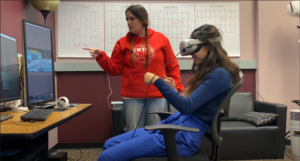
Our general playtest responses were neutral-to-positive, with one of the main negatives being a general sense of confusion. Testers were already intrigued by the world and enjoyed exploring it, but were generally unsure of how its pieces fit together into a coherent whole. They enjoyed destroying papers (the scene’s main reality check) by looking at them, and discovered this activity without any prompting. Some testers even set a goal for themselves of finding all the reality checks they could without being told. However, testers did not understand the purpose of this activity yet, and still had some trouble knowing exactly which of their actions would result in this destruction. Responses to our movement system were quite positive this time, affirming that we had incorporated last week’s feedback well.
Most importantly, testers definitely responded to each shift of emotion in the scene. While no tester noticed every single change of the environment, they all noticed at least one major change at each stage that clued them in to the new feeling. However, while the emotional responses were timed how we expected, they were not particularly strong yet, and they generally lacked staying power. For instance, the first appearance of the shadow figures was a strong moment for every tester, but most reported losing any sense of fear once they looked closer and realized these figures were not going to actually do anything harmful to them in this demo. Testers also reported that some of the environmental changes felt random, and wished that there was a more directed experience guiding them to the changes as they happened. Still, the fact that the timings worked, along with the prevalence of words such as “curious” and “eerie” in our feedback surveys, make us confident that we are on the right track!
